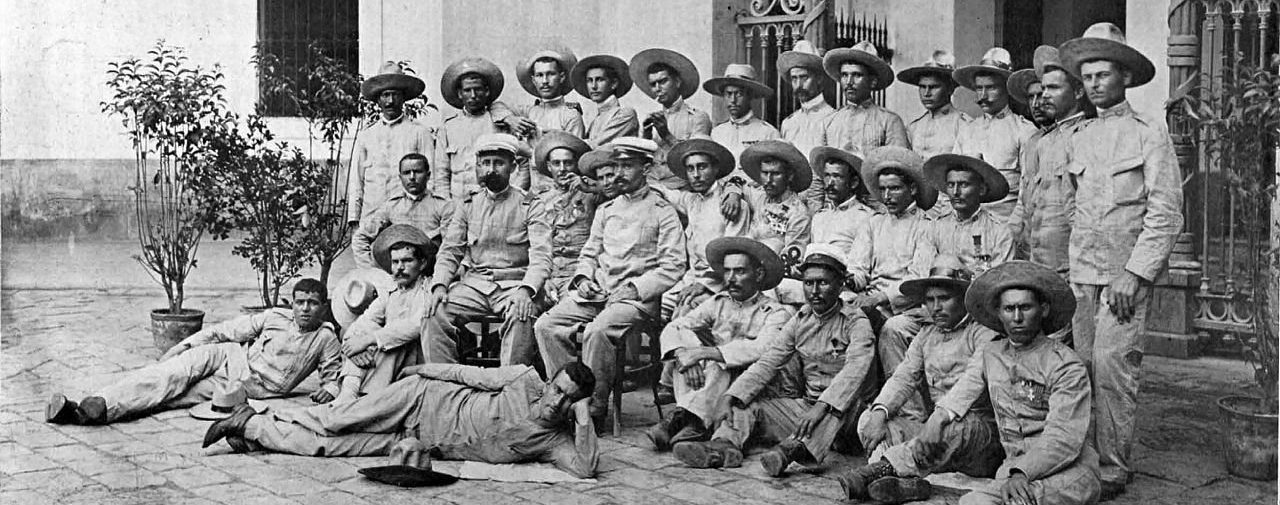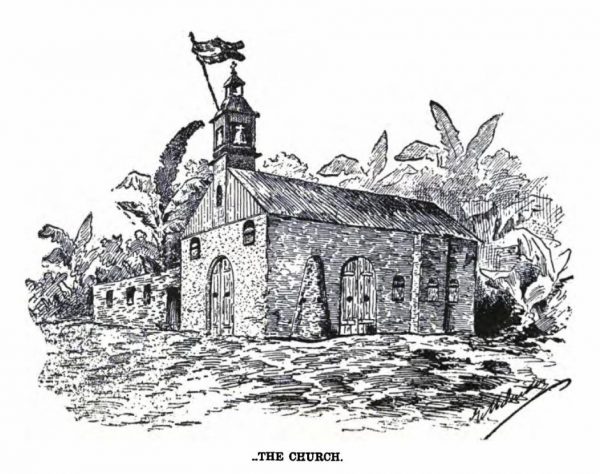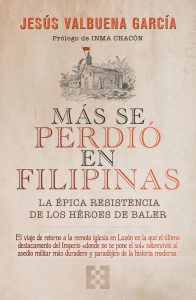Source:El Debate
After 337 days of siege in the siege of Baler, the resistance came to an end, the Spanish flag was lowered and the soldiers abandoned the redoubt. 33 were the men who returned to the mainland after resisting in Baler.
From the 1890s onwards, a growing nationalist sentiment began to take hold in the Philippines. This eventually exploded in the Revolution of 1896, in which soldiers led by the Katipunan – the secret society founded for Philippine liberation – staged the most violent side of the uprising against Spanish rule.
On 30 August 1898, General Blanco declared a state of war on the island of Luzon, at the northern tip of the Philippine Islands. The uprising, which was intended to put an end to the peninsulars in one fell swoop, turned into a long war based on small battles concentrated mainly in the province of Cavite, in the bay of Manila, the present-day capital.
A year later, after several defeats and successes that changed command, when General Primo de Rivera took over the Spanish government, these battles were brought to an end with the signing of the Biacnabato treaty. But far from restoring peace to the islands, the Spanish-American War soon began. In May 1898, the United States entered Cavite Bay and opened fire on the Spanish fleet. The US government claimed that the reason for this attack was to defend the American coasts in the Pacific. However, despite getting what they wanted, the US troops did not withdraw from the Philippine Islands and sent new troops to the archipelago until they “conquered” the city of Manila in August. With the possession of Manila, all that remained was the total annexation of the islands, and this was done through the Paris Peace Treaty, signed on 10 December 1898.
The Siege of Baler
The defeat at Cavite against the Americans and their economic and armed support for the Filipinos led Emilio Aguinaldo, mayor of Cavite and one of the leaders of the country’s independence movement, together with the members of the Katipunan society, to resume the war against the last remaining Spanish detachment in Baler, holding out in the Central Luzon region, thus beginning the siege.
The detachment had 55 men, including Infantry Captain Enrique de las Morenas and Lieutenants Juan Alfonso Zayas and Saturnino Martín Cerezo. The adversaries outnumbered them, so Captain De las Morenas agreed to take refuge with his troops in the village church, as it was the building with the strongest construction. There they stored food and ammunition.
The siege intensified, the lack of fresh food was beginning to be felt despite the fact that the garrison doctor had managed to build a small vegetable garden near the church, and the great psychological punishment to which the whole detachment was subjected due to the prolonged siege was beginning to weaken them. This situation meant that the document that arrived from the Philippine Parliament communicating the signing of the Treaty of Paris and, consequently, that the Philippines was no longer Spanish, produced more mistrust than hope, as they had already been deceived by the Filipinos on other occasions. The increasingly well-organised attacks wore down the soldiers’ forces, and after 282 days of resistance they finally ran out of food. However, they continued to hold out, convinced that they were still protecting Spanish territory.
A new parliamentarian arrived at the church and identified himself as Lieutenant Colonel Aguilar Castañeda, but some details such as his strange uniform or his accreditation documents made General Martín Cerezo once again suspicious of the parliamentarian and the news he brought with him. The parliamentarian, perplexed by the repeated mistrust, said to Martín Cerezo: “What do I have to do to make you believe me, you expect General Ríos to come in person?”
Wary of the news, the soldiers of Baler continued to defend the siege. After 11 months in the Philippine village church, at the end of May 1899, in an attempt to make the Spanish soldiers give up their resistance and return to Manila, Lieutenant Martin Cerezo discovered a news item in the newspapers that could not be an invention of the islanders, which made him recognise and realise, definitively, that the previous notices telling him that Spain no longer possessed sovereignty over the Philippines were true and that there was no point in continuing to resist in the church.
Gathering the troops together, Lieutenant Martin Cerezo explained the situation and proposed a retreat in which their dignity and honour, placed in them by Spain, would not be lost. Finally, on 2 June 1899, after hoisting the white flag in the church and listening to the bugle call, the Spanish detachment in Baler surrendered after 337 days.
An event to remember
This event is recorded in literature thanks to the work written by Martín Cerezo himself, The Siege of Baler, published in 1904. It was translated into English in 1909 and republished three times in the first half of the 20th century. It was also brought to the cinema with the film The Last of the Philippines in 1945, which reflects the soldiers’ sense of duty and honour in remaining and defending the siege despite receiving letters informing them of the development of the conflict and the Spanish surrender. In the film, Lieutenant Martin Cerezo expresses after burying several of his soldiers:
We have to keep fighting. We have already been through harder times: the attacks, the artillery, the epidemic, the betrayal and, above all, this. A year, a year without knowing anything but these four walls. But we have the same obligation as when we arrived. To lose hope is not to lose honour. We will fight until the last one falls.
Now, this historical fact is brought back to life thanks to Jesús Valbuena García, writer of Más se perdió en Filipinas and great-grandson of one of the 33 soldiers who survived the siege of Baler, García Quijano. In the book, Jesús Valbuena recounts the historical facts as they were narrated by the protagonists themselves, the press and the different testimonies from the period between 1898 and 1899. Valbuena retells the exploits of these heroic soldiers in order to make the memory of those who went down in history as The Last of the Philippines prevail.
Share this article
On This Day
- 1572 Andrés Díaz Venero de Leyva founded the town of Guaduas (Colombia).
- 1578 Brunei becomes a vassal state of Spain.
- 1672 Spanish comic actor Cosme Pérez ("Juan Rana") dies.
- 1693 Painter Claudio Coello dies.
- 1702 The Marquis de la Ensenada was born.
- 1741 Spanish troops break the siege of castle San Felipe in Cartagena de Indias (Colombia).
- 1844 The Royal Order of Access to Historical Archives was promulgated.
- 1898 President Mckinley signed the Joint Resolution, an ultimatum to Spain, which would lead to the Spanish–American War.
History of Spain
26 August 2020
27 January 2021
Communism: Now and Then
23 December 2022
28 July 2021








